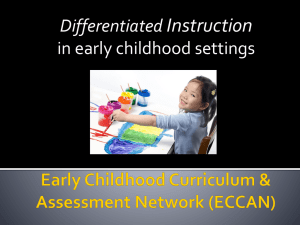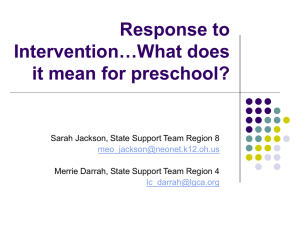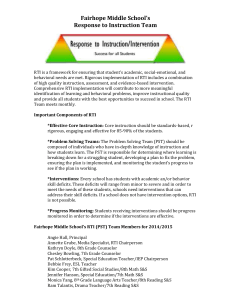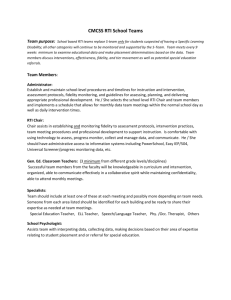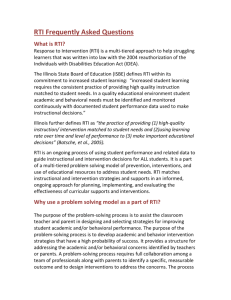Early Childhood Response to Intervention (RtI) Form
advertisement
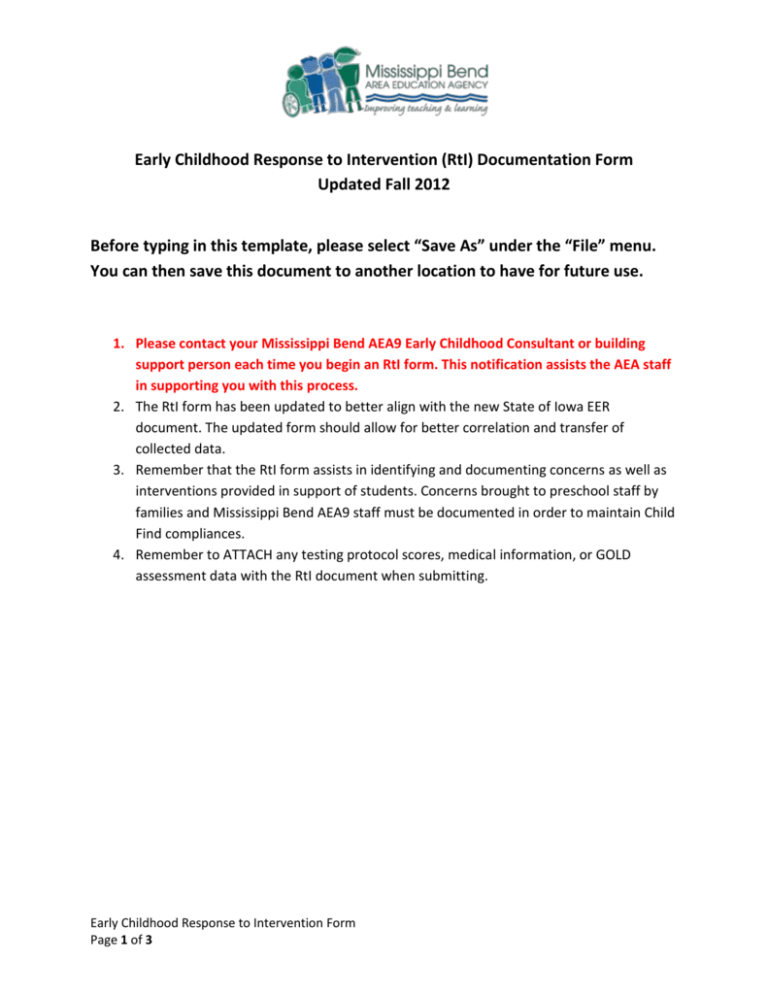
Early Childhood Response to Intervention (RtI) Documentation Form Updated Fall 2012 Before typing in this template, please select “Save As” under the “File” menu. You can then save this document to another location to have for future use. 1. Please contact your Mississippi Bend AEA9 Early Childhood Consultant or building support person each time you begin an RtI form. This notification assists the AEA staff in supporting you with this process. 2. The RtI form has been updated to better align with the new State of Iowa EER document. The updated form should allow for better correlation and transfer of collected data. 3. Remember that the RtI form assists in identifying and documenting concerns as well as interventions provided in support of students. Concerns brought to preschool staff by families and Mississippi Bend AEA9 staff must be documented in order to maintain Child Find compliances. 4. Remember to ATTACH any testing protocol scores, medical information, or GOLD assessment data with the RtI document when submitting. Early Childhood Response to Intervention Form Page 1 of 3 Early Childhood Response to Intervention (RtI) Documentation Form Date: Child’s Name: Birth Date: Teacher: Center: 1. What is your area of concern? Academic Behavior Physical Health Hearing/Vision Communication Adaptive Behavior List specific concerns within the checked domain (i.e., academic: colors, counting, following directions): 2. What evidence suggests the concerns have occurred over time and/or in various settings? 3. What are the child’s strengths that support the child’s educational success in the area(s) of concern? INTERVENTION PLAN DOMAIN: 1. When will the intervention start? 2. Who is carrying out the intervention plan? 3. List the GOLD Objectives, Iowa Early Learning Standards or preschool’s adopted curriculum objectives for the area of concern at the child’s age level: 4. Baseline data (describe in measureable terms what the student is able to do): 5. What is the expected performance for a typical peer in your classroom with regards to this skill? Early Childhood Response to Intervention Form Page 2 of 3 6. Write a SMART goal for the term of that intervention. (i.e. By February 1,when given manipulatives, Joe will be able to count using one to one correspondence to 5 in 6 out of 10 trials.) Describe the specific strategies, supports, environmental changes, etc. that will be used in order for the child to gain this new skill. How often will this intervention be provided? 7. How and when will progress monitoring be provided? INTERVENTION FOLLOW-UP 1. Following the intervention, what are the individuals level of performance in comparison to what is expected? 2. If the child received instruction in a group, how was the child’s response in comparison to peers in the same small group? 3. Identify the instruction, interventions and environmental changes under which the individual experienced the most growth of success. Interventions were successful in the general education setting. Interventions were not successful in the general education setting. 4. What are the next steps? Early Childhood Response to Intervention Form Page 3 of 3
